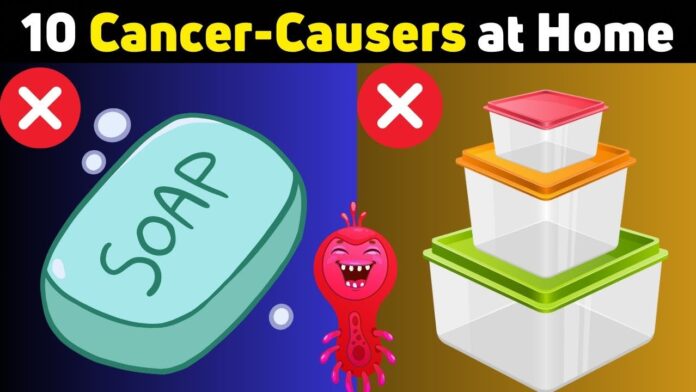Over recent decades, our exposure to toxins, from the air we breathe to the products we use daily, has increased, affecting various aspects of health. Alongside lifestyle factors such as poor diet and lack of exercise, environmental factors are increasingly recognized as significant contributors to cancer rates. While complete avoidance of toxins may not always be feasible, making informed choices can help minimize exposure and protect health.
Firstly, it’s crucial to consider the carcinogenic potential of common household items. From non-stick cookware and plastic containers to household cleaners and candles, many everyday products can inadvertently elevate cancer risk when used excessively.
Here are some household items known to potentially contribute to cancer:
- Non-stick cookware: While convenient, Teflon-coated pans can emit harmful chemicals when heated, such as perfluorinated compounds. Choosing ceramic or cast-iron cookware offers safer alternatives.
- Candles: Burning candles can release chemicals like toluene and benzene, linked to cancer. Opting for natural alternatives like soy or beeswax candles can reduce exposure.
- Paints and solvents: Some paints, varnishes, and solvents contain carcinogenic chemicals such as benzene, formaldehyde, and toluene. Prolonged exposure to these substances has been associated with cancer.
- Plastic containers: Plastic food storage containers may contain carcinogens like bisphenol A (BPA) and phthalates. Choosing glass or stainless-steel containers for storing and reheating food is a safer option.
- Household cleaners: Many conventional cleaning products contain carcinogenic chemicals such as formaldehyde, ammonia, and chlorine bleach. Opt for eco-friendly, non-toxic alternatives or make your own cleaning solutions using vinegar and baking soda.
- Pesticides: While effective against pests, pesticides pose health risks, including cancer. Natural pest control methods or consulting professionals trained in integrated pest management can help reduce exposure.
- Electromagnetic radiation: Sources of electromagnetic radiation, like electronics and Wi-Fi routers, are prevalent in households. Although ongoing research investigates their long-term effects, reducing exposure by keeping electronics away from sleeping areas and turning them off when not in use is advisable.

 हिंदी
हिंदी






